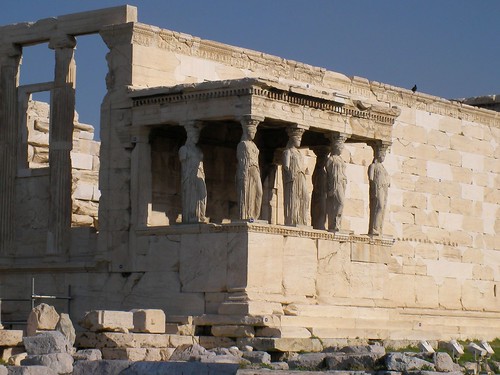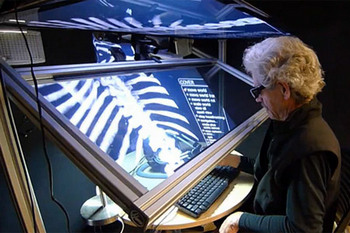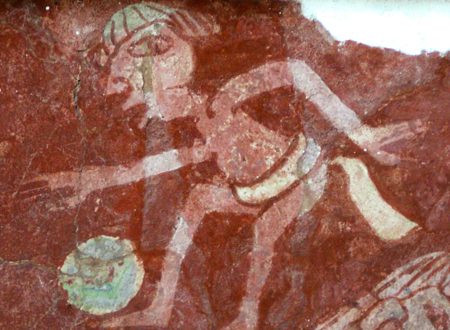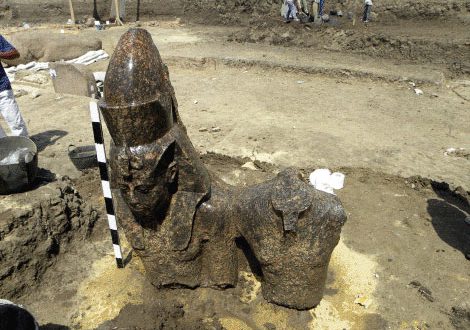 The results of the ‘What value do replicas hold?’ Heritage Key survey are in!Everybody agrees that a replica – regardless of how real it looks – can only ever be a duplicate. Yet the vast majority (79.28%) of those who took our ‘What value do replicas hold?’ survey see good use for these clones, in educations, research, protection from damage and saving on travel costs.
The results of the ‘What value do replicas hold?’ Heritage Key survey are in!Everybody agrees that a replica – regardless of how real it looks – can only ever be a duplicate. Yet the vast majority (79.28%) of those who took our ‘What value do replicas hold?’ survey see good use for these clones, in educations, research, protection from damage and saving on travel costs.
Replica Valley of the Kings and King Tut’s Tomb:Worth a Visit?
The ‘Replica Valley of the Kings’ is hot news lately, with the SCAand the Getty Institute embarking on a joint effort to protect the tomb of King Tut by laser-scanning it with the aim of creating a Dolly-KV62 to herd the masses of tourists into. We were wondering, if this actually happens, would you still travel all the way to Egypt to visit this replica? The answer is a clear ‘njet’, with 79.28% saying a replica would not be worth the trouble. Of course, you could still visit the real Cairo Museum with a replica of the Rosetta Stone!
You might not want to visit the replica tombs, but the majority of respondents agree that permanently closing heritage sites to tourists is justified to protect and/or research them. 44% say both reasons are valid, while a smaller group, 33%, think that only protecting them from damage is enough to close them.
Though the majority of our survey-takers want to visit King Tut’s treasures at the Cairo museum, many agree that a visit to the Semmel replica exhibition ‘Tutankhamun – His Tombs and his Treasures’ can be worthwhile too – especially if it means a huge discount on the travel budget. 18.52% actually prefer the Semmel exhibition over a journey to Cairo!
The Best Replica in the world…?
Opinions are much divided on which is the best replica out there, but an honourable mention must go to the Rosetta Stone – of which replicas were most often encountered in the Cairo Museum, the basement of the British Museum and Saudi Arabia. The survey’s most popular replicas are the reconstructions of entire tombs and villages, such as the Tomb of Tutmosis III in Edinburgh, incredibly well-executed replicas of Lascaux and other cave dwellings containing rock paintings, the Arbeia Roman Fort’s gateway in South Shields and ‘restored’ sections of the Minoan palace complex at Knossos.
Everybody acknowledges that certain parts of buildings and sites should sometimes be evacuated for protection. In this case replicas are well and truly allowed. The Caryatids at the Erechtheum Temple on the Acropolis is a great example of such a situation. The originals were removed to protect them from pollution and are, aside from oneLord Elgin took to the British Museum, still available to admire in the nearby Acropolis Museum.
The British Museum is leading in the ‘most replicas mentioned’ category (the Rosetta Stone, the Assyrian wall friezes, the Giant Gate) as well as being the home of most originals with replicas elsewhere: the Lycian Sarcophagus at Xanthos, Turkey (original in the BM), the Rosetta Stone in Cairo (original in the BM), the Sutton Hoo treasure (orginal in the BM). Coming in second is the Metropolitan Museum of Art with their Egyptian Tomb and Ghiberti’s Gates of Paradise at the Metropolitan Museum of Art.
Other must-see replicas include the cast of Trajan’s Column at the V&A Sculpture Gallery, the Roman watermill at the Museum of London, the Kouros statue at the Getty Museum (see fakes) and the Hominid Skulls at the Natural History Museum, London (those were fake?! I just visited it a few weeks ago, and didn’t notice).
A must-not-see, according to one of our fans, is “the horrible, badly labelled, poorly explained plastic mould of a hogback viking stone at the Kelvingrove Museum, Glasgow.”
Labelling your Replicas
Some respondents to our survey were convinced they’d never seen a replica in their life. Others opted for “Not sure, they are not always labeled” – which might account for the fact that 94.50% of them say museums should state or label which objects are ‘the real thing’ and which are replicas, reconstructions or the result of experimental archaeologymuch clearer.
Nefertiti and (other?) Fakes
Leiding Swiss historian Henri Stierlin believes the famous Bust of ‘Nofretete’ (held hostage?) at the Neues Museum is a copy, commissioned a century ago by ‘discoverer’ Ludwig Borchardt. Yet 83.16% of those who took the survey agree with Heritage Key writer Paula Veiga that the Nefertiti Bust is genuine.
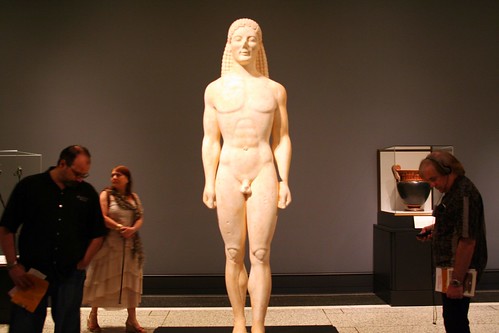 The ‘Fake of all Fakes’, according to our respondents, is the Turin Shroud, but the most interesting might be Getty’s ‘Statue of a Kouros’ mentioned above. Just like the Bust of Nefertiti, it’s fakeness is still debated fiercely to this day. The signage of the Getty Kouros ominously reads, “Greek, about 530 BC, or modern forgery.”
The ‘Fake of all Fakes’, according to our respondents, is the Turin Shroud, but the most interesting might be Getty’s ‘Statue of a Kouros’ mentioned above. Just like the Bust of Nefertiti, it’s fakeness is still debated fiercely to this day. The signage of the Getty Kouros ominously reads, “Greek, about 530 BC, or modern forgery.”
“I’m not aware of any evidence of specific cases but given my perceptions of human nature and the apparent value of some artefacts, I would suspect that many would be forgeries,” says one of our fans. Fakes &Forgeries curator Paul Denis agrees in a recent interview with Heritage Key.
Digital Modelling: a Tool to Preserve World Heritage
We’ve suggested accurate digital modeling as the best way to preserve a terminally decaying site (with excellent graffiti) like Pompeii. A reasonable 55.96% of respondents agree with us.
Many suggest extra measures that could be taken to slow down the decay (tourist education, limited public access, …) whilst mankind fine-tunes its preservation, excavation and recording techniques. Whilst ‘biodome! biodome!!!’ (or some other sort of cover) was a quite common answer to the question, one person is convinced we should “enjoy it while it lasts” and just keep on digging.
Agree? Don’t agree? Want to add some nuances or just share your opinion? Leave your reply to the ‘What value do replicas hold?’ survey , or join the discussion on replicas, fakes and forgeries on the Heritage Key discussion page.

